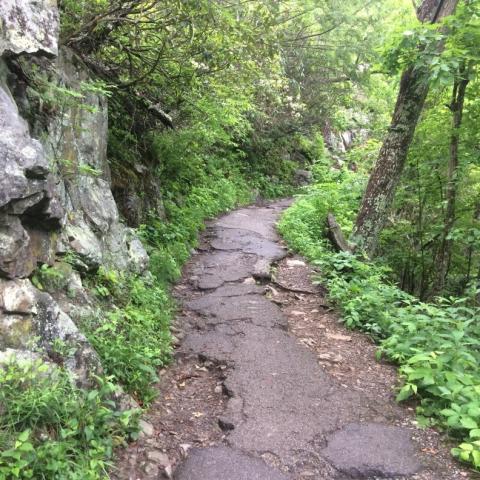
An area of Great Smoky Mountains National Park has been closed to the public through next March to protect hibernating bats/NPS
An area of Great Smoky Mountains National Park has been closed to the public through next March to ease the stresses on hibernating bats.
The Whiteoak Sink area has been closed to limit human disturbance to bat hibernacula -- hibernation roosts -- and help hikers avoid interactions with bats. Park biologists will be monitoring the site throughout the winter to collect population, ecological, and behavioral data that will inform resource managers developing a long-term protection plan for the bats against white-nose syndrome. An extended closure through late spring may be recommended if the winter data suggests such an action would increase the chances for survival of a significant number of bats.
The Whiteoak Sink area is primarily accessed from the Schoolhouse Gap Trail between Townsend and Cades Cove. This closure includes the area bounded by Schoolhouse Gap Trail and Turkeypen Ridge Trail west to the park boundary. The Schoolhouse Gap and Turkeypen Ridge trails will remain open.
Park biologists have reported dramatic declines of cave-dwelling bat populations throughout the park. The decline is thought to be due to white-nose syndrome. Infected bats are marked by a white fungal growth on their noses, wings, and tail membrane. The skin irritation damages skin tissue, causing the bats to wake from hibernation during winter months. Once aroused, the bats burn energy at a much faster rate, depleting stored fat. With no food source available during the winter, the bats soon die.
Infected bats exhibit unusual behavior, including flying erratically during the day, even during winter months, and diving down toward people. They may be seen flopping around on the ground around cave openings.
“We first confirmed the presence of WNS in the park in 2010,” said park wildlife biologist Bill Stiver. “The impact has been devastating. We estimate that some of our cave-dwelling bat populations have already declined by 80% and we are doing everything we can to both slow the spread of the disease and protect the remaining animals by closing caves and areas near caves to the public.”
The park is home to 11 species of bats, including the federally endangered Indiana bat and the Rafinesque's big-eared bat, which is a state-listed species of concern in both Tennessee and North Carolina.
Bats play a significant role in maintaining ecological balance as the primary predators of night-flying insects. Biologists estimate that an individual bat can eat between 3,000 to 6,000 insects -- moths, beetles, and mosquitoes -- each night.

Bats with white-nose syndrome have a white fungus on their nose/NPS
Great Smoky Mountains National Park is cooperatively working with other parks and federal, local and state agencies across the country to protect bats and manage cave habitats. In an effort to prevent the unintentional spread of WNS by people, the park closed all of its 16 caves and two mine complexes to public entry in 2009. Ongoing research in the Smokies includes monitoring bat populations in the winter during hibernation and tracking bats in the summer to determine habitat use.
A recent plan released by the U.S. Fish & Wildlife Service aimed at stabilizing the dramatic decline of the Indiana bat, identified hibernacula found in the Sinks as one of only 13 sites across the country considered critical habitat for this endangered bat. Wildlife biologists have determined that giving the bats the chance to survive includes establishing protective zones surrounding critical habitat caves.
Humans are not susceptible to WNS because the fungus requires a cold body temperature to survive, but skin-to-skin contact with bats should be avoided due to other transmittable diseases such as rabies. Bats are the only mammal species in the Smokies that have tested positive for rabies.
According to the Centers for Disease Control and Prevention, the transmission of rabies virus can occur from minor, seemingly unimportant, or unrecognized bites from bats. For human safety, it is important not to touch or handle a bat. The Department of Health and Human Services recommends that individuals should seek immediate medical attention if they have had skin-to-skin exposure to a bat.




 Support Essential Coverage of Essential Places
Support Essential Coverage of Essential Places






